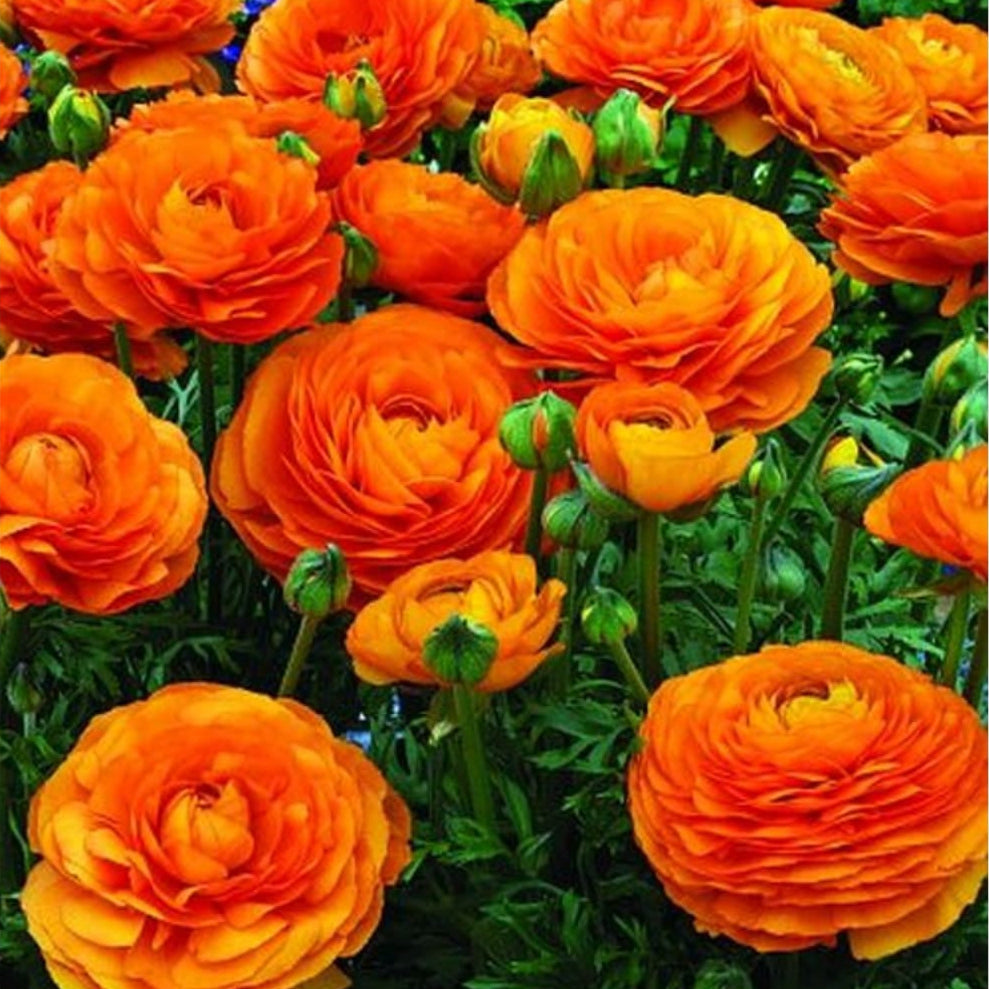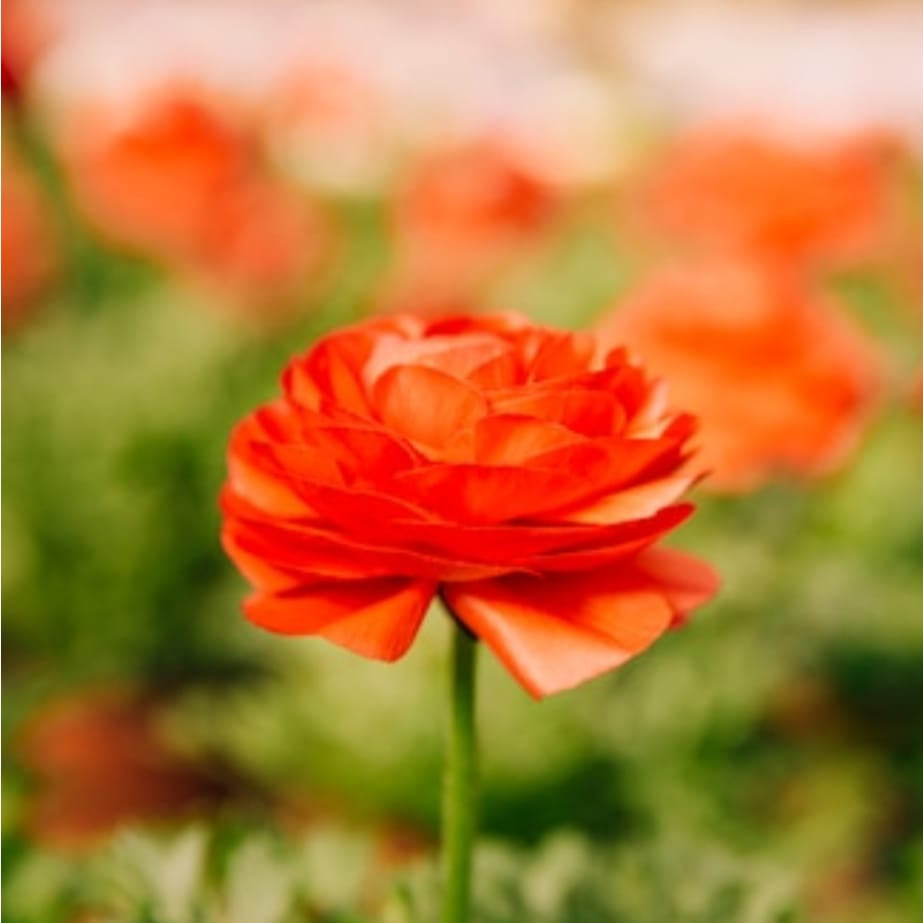Persian Buttercup 'Aviv Orange'
Family
Ranunculaceae
Origin
Europe & Asia
Description
Ranunculus, also known as buttercup, comes in various colours from bright pink, red, and purple to cream, pale yellow, and orange and each colour carries a particular meaning with itself. Yellow ranunculus stands for bedazzled. This flower is ideal for those who want to express their love to their beloved.
Ranunculus asiaticus 'Aviv Oranje' bulbs produce fully double, peony-shaped flowers with vibrant orange petals that deepen in yellow near the center. These large blooms, measuring 4-5 inches across, appear on sturdy 12-16 inch stems. The plant is herbaceous, growing 20 to 40 cm tall with a moderately bushy form.
Blooming from January to March in plains and February to April in hills, these bulbs are perfect for creating vivid spring bouquets. For optimal growth, plant them in October or November regardless of altitude.
Environment
Persian buttercups do well in sunny spots (at least six hours of sunlight on most days) to grow and bloom best. However, they react to too much direct midday sun by wilting flowers quickly. Ranunculuses like it cold. If the temperature gets too warm, the plant stops giving flowers and goes into ‘rest’. The energy then goes into the roots instead of the flowers.
Soil must be rich, well-drained soil. The pH level of your soil should be 6.5-7.0, slightly acidic. If you have a heavier (clay) soil, add in sand, cocopeat, or organic manure to lighten and loosen the soil texture for better drainage.
Before planting, the tubers should be placed in lukewarm water for a 30 min to 1 hours. Then you can plant the Persian buttercups 4 cm deep and with a planting distance of about 20 cm with the roots down into the ground. Plant the bulbs with the end that looks like claws facing down and cover them with one to two inches of soil.
Water the bulbs well upon planting, and then withhold water until growth appears to avoid rot. Once the plants are established, they prefer moderately moist soil, so water only when the soil begins to dry out.
Ranunculus foliage is highly susceptible to powdery mildew, so maintaining good airflow in and around the plants is critical. Use drip irrigation or water early in the day so the foliage stays as dry as possible. Avoid overcrowding the plants.
Mix some compost or bulb fertilizer into the soil of the planting site before planting your corms. If growing in a container, fertilize the plants biweekly with a water-soluble fertilizer.
Landscape Use
It is suitable both for the flower bed and as a pot plant on the balcony or terrace.
Caution
Persian buttercup is poisonous to humans and animals. All parts of the plant contain toxic glycosides that can cause severe symptoms of poisoning, depending on the amount ingested.




















